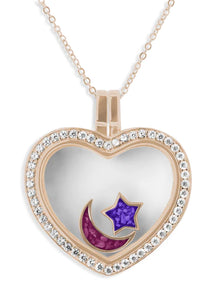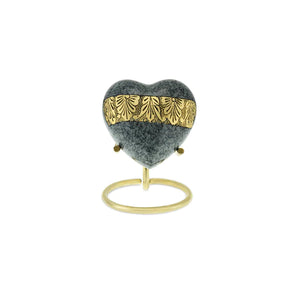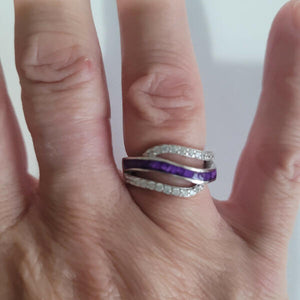Memorial jewellery has been around for many years

Memorial jewellery has become very popular in recent years. However, the idea of creating a piece of jewellery in memory of someone is not new. Mourning jewellery, frequently rings, date as far back as the Tudor period in Britain.
Mourning in the Victorian Era
Most widows in the Victorian era would wear mourning attire for two to three years. A widow had to publicly grieve the death of her husband, and for the first year of "deep mourning", she would wear plain black clothes and keep her face veiled in public. Additionally, during this time no jewellery or accessories were permitted. During the second year, however, many widows would show their wealth and status by purchasing elaborate and expensive mourning clothes and jewellery.
Memorial jewellery in Victorian times
The Victorians were very fond of crafting memorial jewellery to remember someone special. Some pieces were individually crafted and engraved, while others were mass-produced "momento mori". These usually had images associated with death to remind the wearer of their own mortality.
Necklaces, rings, lockets and earrings were all popular. A brooch worn on a high collar was a particular favourite, and also highlighted the wearer's modesty.
Black settings and stones were very common in mourning jewellery, especially black enamel, with gold or silver. Whitby in Yorkshire became famous for its memorial jewellery using local Jet. For those who could not afford real Jet, they would often substitute ebonite or black glass.
Some pieces of memorial jewellery contained a photo of the deceased, others a lock of their hair.
Symbolism in mourning jewellery
The Victorians were very keen on the use of symbols to represent death and mourning. These include arrows, skulls, skeletons, bones, curtains, and urns. A chrysalis represented death and a butterfly the soul. Clasped hands symbolise an eternal bond, crossed swords, a battlefield death, and a lamb often refers to the innocence of children. Also popular are weeping angels and droplets in blue symbolised tears and in red, blood. Thistles represent sadness, forget-me-nots, remembrance, and yew, eternal life. Half-open flowers or buds often symbolise the death of a child.
Symbols of the afterlife include flying birds, representing the soul going up to heaven, where a key represented the opening of the heavenly gate and the gate the transition to another life. The lion represented the beauty of the immortal soul and the peacock immortality. Additionally, the moon represents death and rebirth as do the phoenix and the scallop. Also, lizards and snakes are common.
Memorial jewellery today
Nowadays, memorial jewellery is much less morbid and dark and much more beautiful and ethereal.







